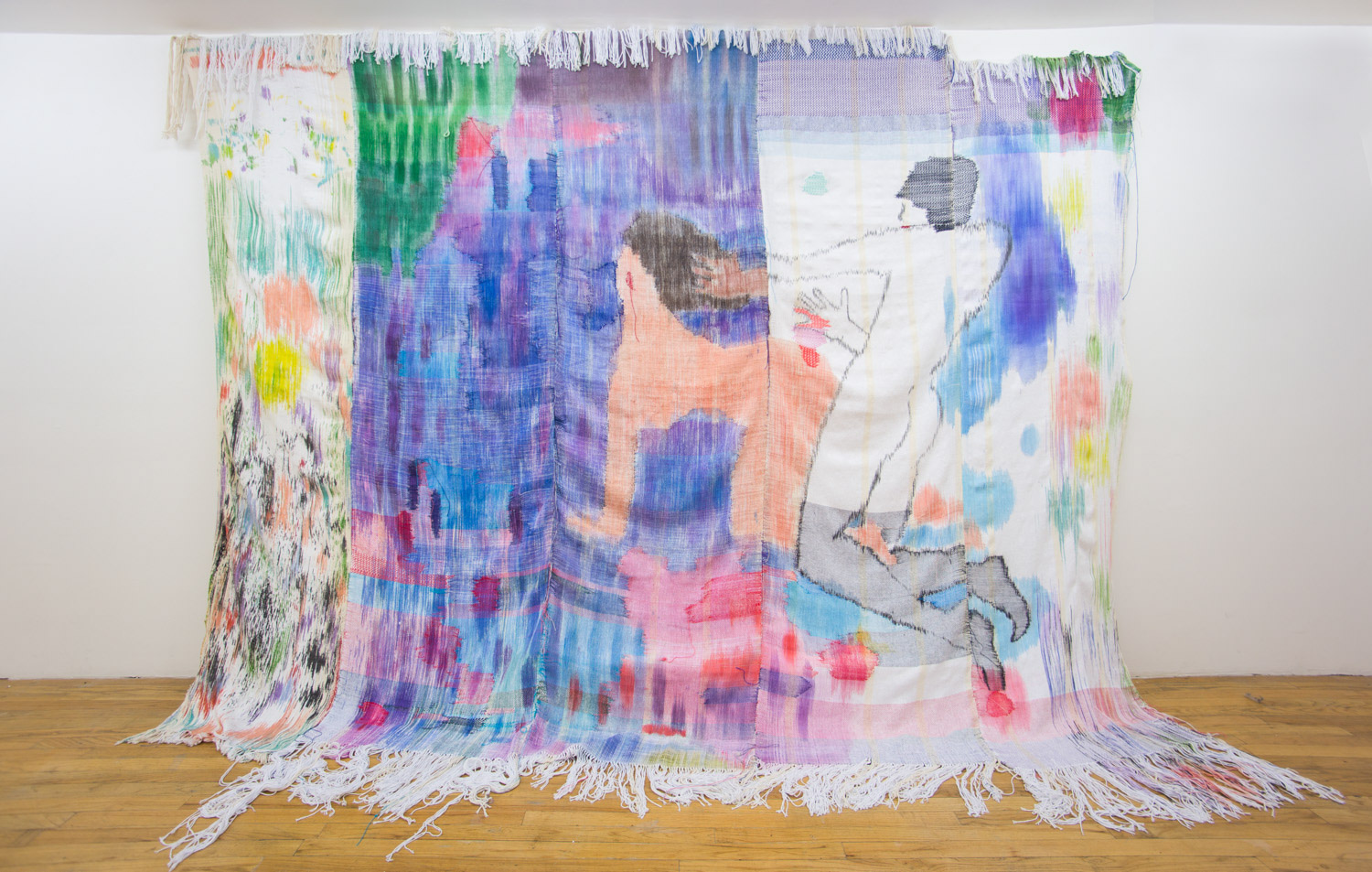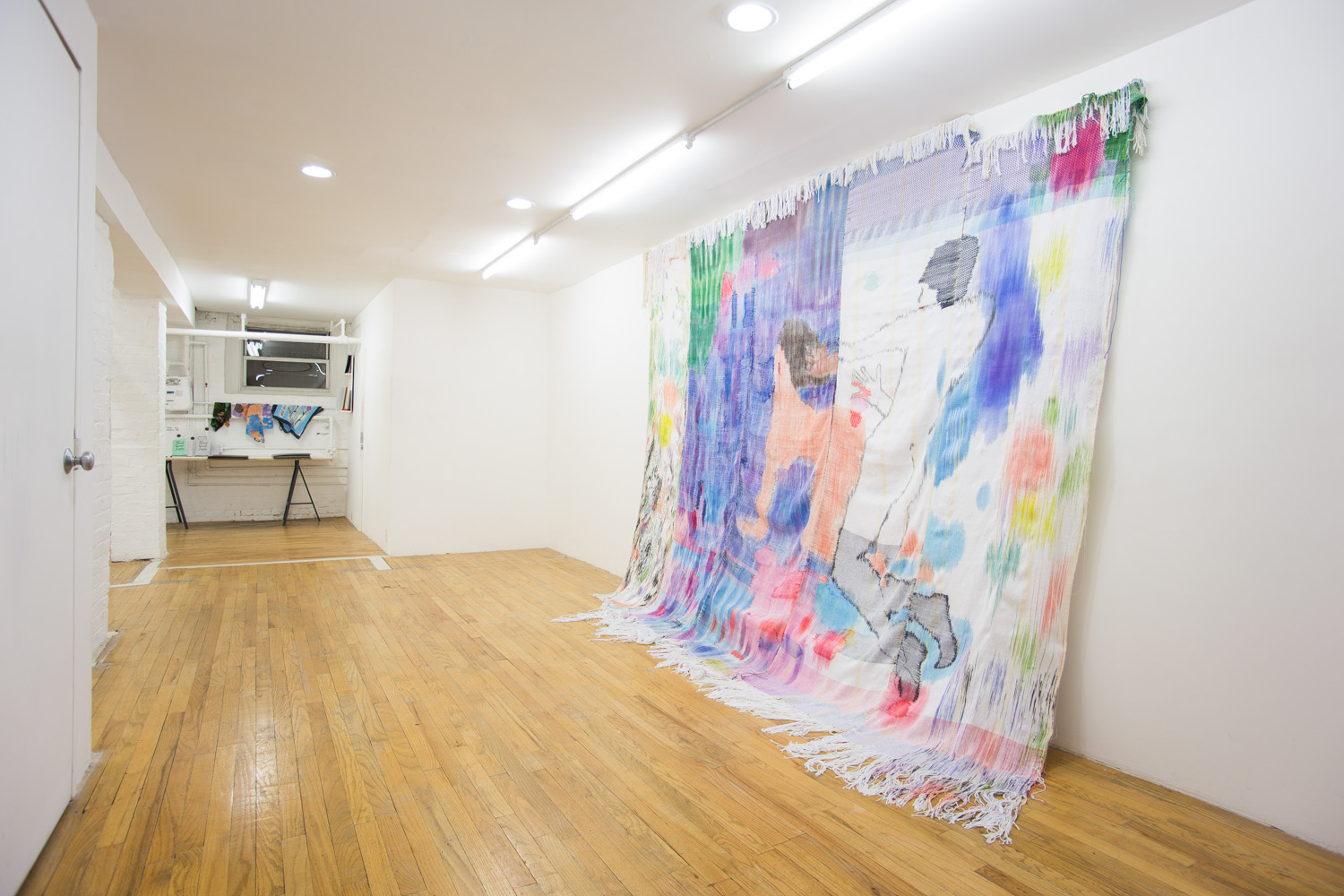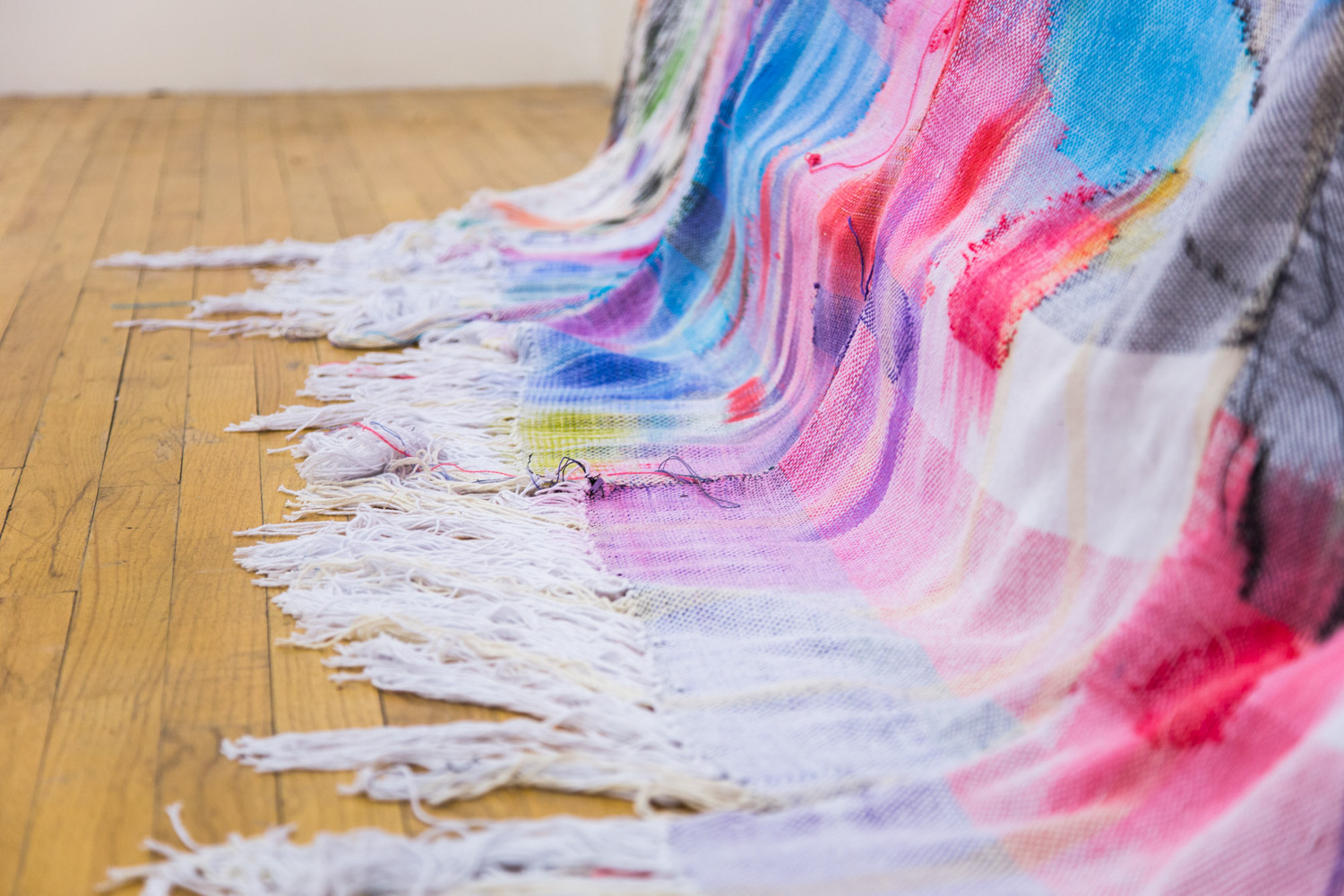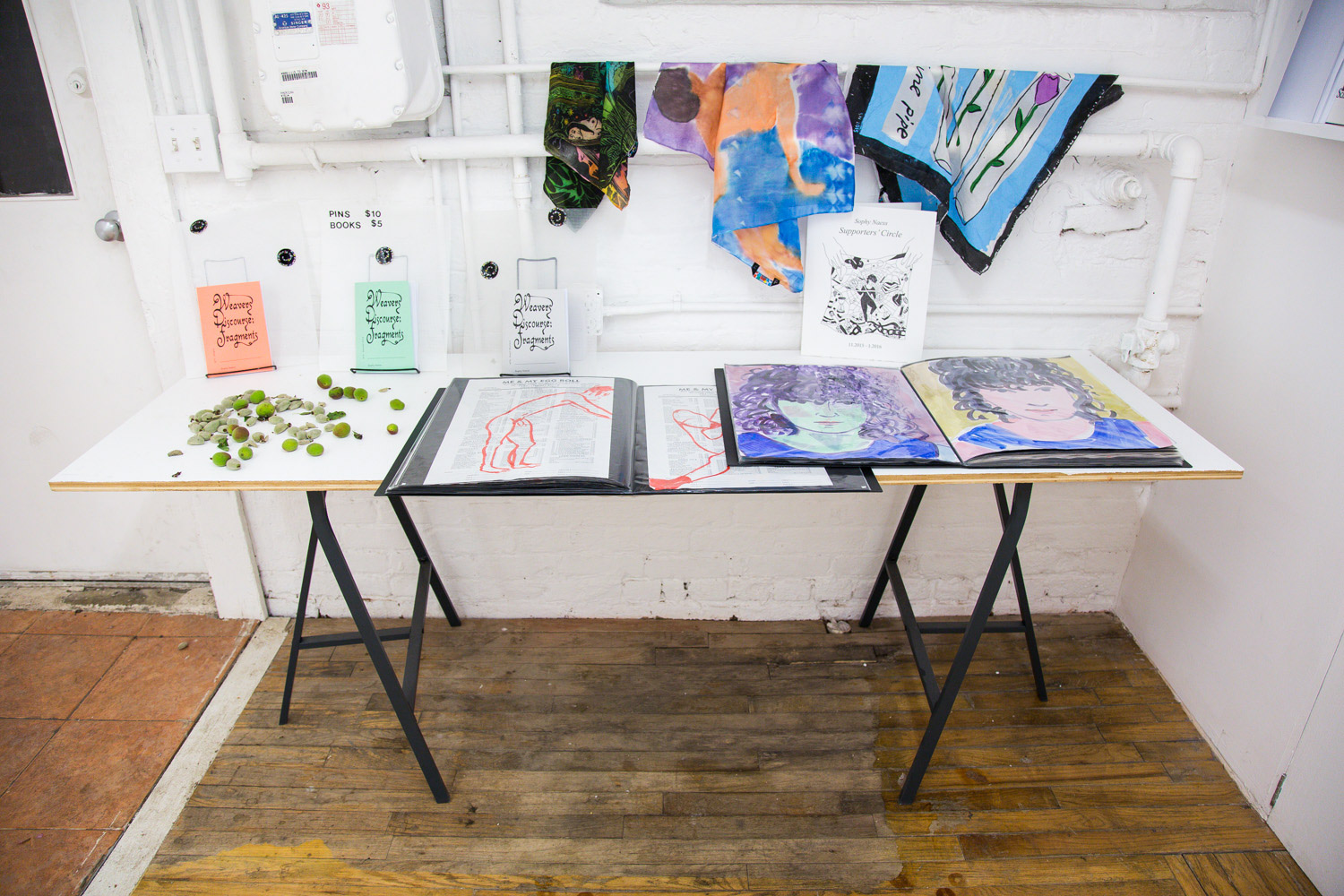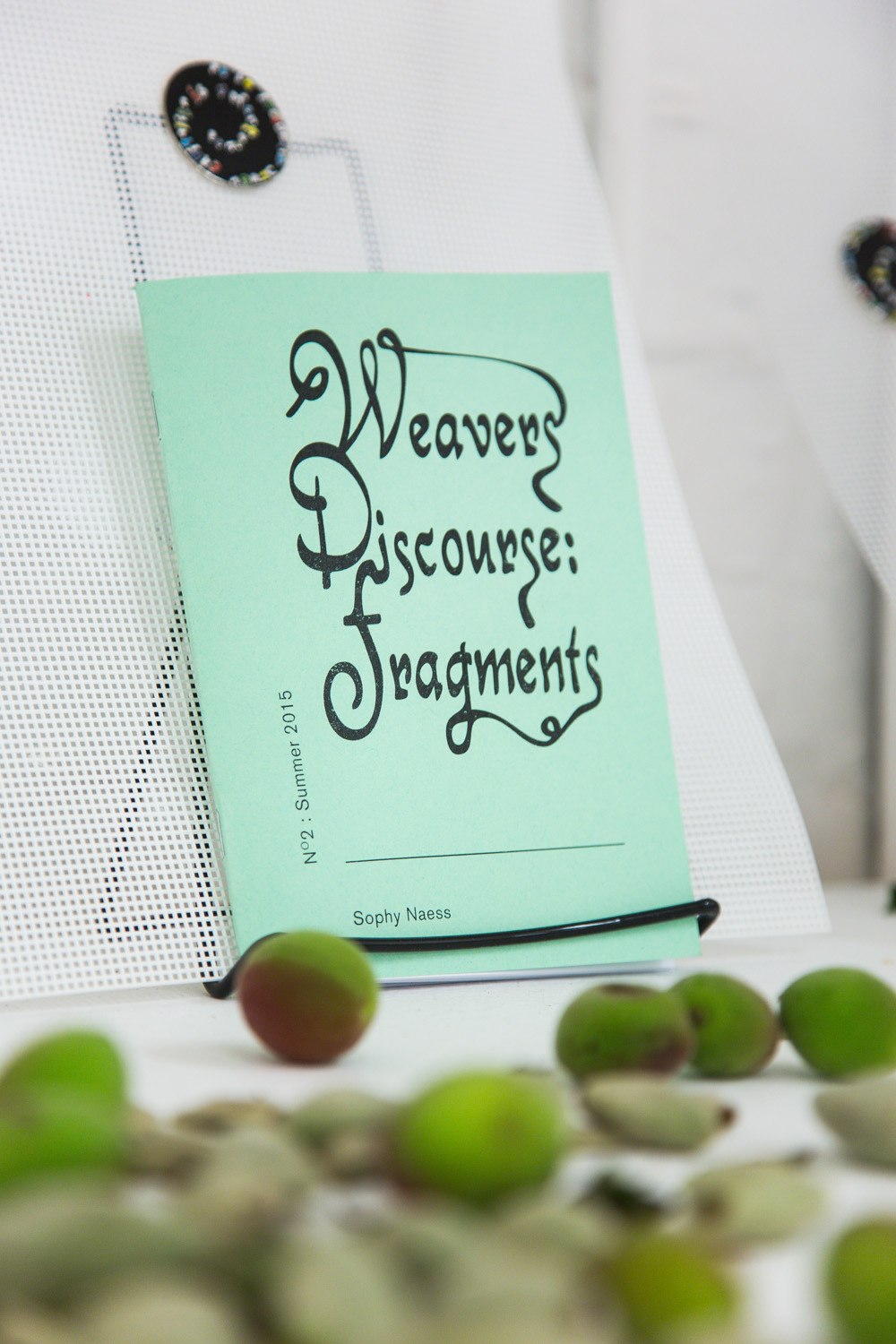PAST:
Sophy Naess
Labor of Love
April 9–May 21, 2016
I retrieved the loom from Phillipsport, New York, with the help of my father. It became a psychic presence in my room, commanding me to think about structure, design, purity, and hard work. It was a salvation.
My mother spent the night. I realized how sexualized my place had become. I hid the coconut oil. I hoped there were no condom wrappers floating around in bed.
I wanted to work harder and I couldn’t afford the distraction of all these men coming over to fuck at all times of day. I cancelled all my dates except for ____. We made a plan to paint with oil and I set about preparing canvases.
—Rachel would help me dress the loom
—Sarah would teach me how to use weave drafts
—_____ would be my model
—Emma would show me how to use my new shuttles
—I would use canvas for my cartoons and stretch these paintings
—I would continue writing my weavers discourse, my self being the warp into which so many experiences were woven.
Labor of Love, Sophy Naess's first solo show in New York, presents a large-scale tapestry depicting a luscious romp. Trained as an oil painter, Naess took up weaving following the generous bequest of a four harness floor loom from the family of Hayley Silverman. The exhibition is accompanied by three new chapters from Naess's ongoing project, A Weaver's Discourse, designed by Adam O'Reilly, and an edition of lapel pins designed in collaboration with Raque Ford.
Sophy Naess (1982) lives and works in Brooklyn, New York. She first exhibited paintings in New York at ABC No Rio in 1999. Recent exhibitions include the Foundation for Contemporary Arts' Artists for Artists anniversary exhibition at Matthew Marks Gallery; The Shandaken Project Retrospective; Chapter; US Blues; and the Spring Break Art Fair. A selection of her illustrations will be included in the upcoming FAMILY issue of Girls Like Us Magazine in May. Naess currently teaches Painting at Cooper Union and Art as Communication at Saint Joseph's College. She is SU CASA artist-in-residence at the Bay Ridge Senior Center.
LABOR OF LOVE
CLOSING RECEPTION
WITH A POP-UP TEXTILE EXHIBITION FROM THE MARLEY AND JORDAN FREEMAN FAMILY COLLECTION
MAY 21, 3–7 PM
"A couple years ago a friend showed me a piece of cloth she had made in a class about the painted warp weaving technique. I was struck by how the painted image (applied to the warp) was diffused by the weft threads woven into it. The dialectical combination of warp and weft softened and destabilized the image. It was a beautiful kind of facture I had never seen before."
In her essay "Pictures Made of Wool: the Gender of Labor at the Bauhaus Weaving Workshop," T’ai Smith compares the status of pictorial weaving to that of painting, examining the reasons for weaving’s “linguistic absence” and inferior status in modernist discourse:
"Weaving practice is on the one hand "feminine"—unable to sublate the body and its labor into the transcendental realm of painting, and on the other hand "feminized"—kept untheorized, without discursive parameters. My purpose has been to give a theory of weaving so that it can be assessed on its own terms. For though grounded in process and labor, weaving has other possibilities within the limits of its craft. Contrasting material features, such as silky vs rough, or shiny vs matte, as well as contrasting weaves, show that the formal design is not merely imposed onto the material, but itself transformed by the different weaves and yarns harnessed in the process. The pictorial form, the materials, and the fabric’s structure are mutually entwined. The limitations of weaving, in other words, are not inadequacies. Rather, they help us understand weaving as a medium, which, like other disciplines, generates its own ideas."
Marley Freeman is a painter with a deep appreciation for textiles. Her brother, Jordan, is a filmmaker. On the closing night of my exhibition of paintings and tapestry, the two will present a pop up show drawn from their family’s vast collection of vintage pieces handpicked by their father at flea markets across Europe. These objects exhibit the splendors of the so called "limitations" of weaving. They will be for sale. Feel free to touch them.
—Sophy Naess


